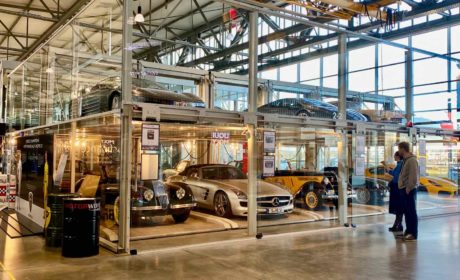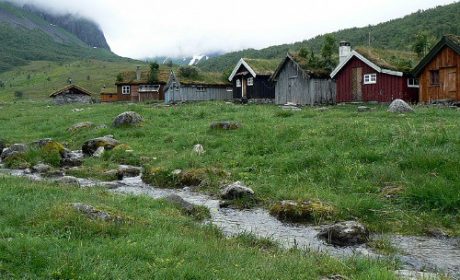Are you a Christmas markets fan who also enjoys off-the-beaten-path travel? In this article, you’ll read about small town Germany’s top Christmas markets. Boomer travelers will learn about the small German Christmas Markets of Bremen, Eisenach, Osnabruc, Hamelin, Lubeck, and Celle.
I’ve already told you about my amazing experience on a Rhine River Christmas Market Cruise. Now, guest contributor, Phyllis Rose, is here to take us on a tour of the top Christmas markets in small town Germany. From Bremen to Celle, these are the markets that will make your trip unforgettable!
Table of Contents
Explore Germany’s Top Christmas Markets on a small town tour
In December, I don’t have visions of sugarplums dancing in my head but rather visions of Germany’s wonderful Christmas markets like the one in Stuttgart. The swirling visions include the heavenly smell of roasting nuts, the sweet and spicy taste of gingerbread, the sounds of Christmas carols wafting overhead, the artisan crafts filling the booths, and the colorful lights brightening a December night.
But there’s some guilt if I just shop. For me, there needs to be some history, too. The Christmas markets do date back to the thirteenth century, so they are historic in themselves. But, the markets are also in the old town centers near lots of historical sites.
Today, these street markets, known as Christkindlmarkt, draw millions each year to major cities, small towns, and villages across Europe. Most visitors focus on Germany’s iconic markets in Nuremberg and Munich, but smaller German towns offer less crowded markets which also have interesting off-the-beaten track historical sites.
Admire Bremen during the holiday season

Bremen, Germany’s largest maritime city, is famous for the fairy tale, “The Bremen Town Musicians,” by the Brothers Grimm. A statue of the musicians – a donkey, dog, cat, and a rooster – stands in the Market Square. If you’ve forgotten the story, buy an English version, readily available in Bremen shops.
Other historical sites around the square include the 30-foot statue of the Knight Roland overlooking the square since 1404, and St. Peter’s Cathedral, an early Gothic church from 1042.

The Old Town Hall, dating from 1409, has a magnificent Renaissance facade from the seventeenth century. Book a tour of the Upper Hall to see the beautiful ceremonial rooms where the city council used to meet. Model ships hang from the ceiling, emphasizing the city’s ties to shipping.
During Advent, Market Square – where markets have been held since 965 – is filled with vendor stalls offering traditional Christmas fare from ornaments to gluhwein to gingerbread to holiday table linens.
Visit Wartburg Castle in Eisenach (and the Christmas Market)

Overlooking the Thuringian Forest, Wartburg Castle stands 1,350 feet high on a ridge near Eisenach. The castle dates to 1067 when the original foundation was laid. More recently, Martin Luther hid out here between May, 1521, and March, 1522, after his excommunication from the Catholic Church by Pope Leo X.

An aerobic climb from the parking area takes you to the Christmas market stalls on the castle’s terraces. Some stalls have a medieval ambience where you can watch candlemakers and glassblowers at work.
After shopping, tour the castle to learn about St. Elisabeth and her connection with the castle and the legend of Tannhauser, the basis for Richard Wagner’s opera which is performed in the castle annually.
You’ll also see the spartan cell where Luther completed a New Testament translation in about 10 weeks. The only original item there is a whale vertebra Luther used as a footstool.
Back in Eisenach, visit the Luther House where Luther lived while attending school between 1498 and 1501. Nearby is the Bach House where Johann Sebastian is thought to have been born.
Boomer Travel Tip
MedjetAssist Members who are hospitalized 150 miles from home receive medical transport to a home-country hospital of choice. Memberships from $99.
Enjoy the Osnabruck Christmas Market

A nearly 20 foot nutcracker, reportedly the world’s tallest, greets visitors to the Osnabruck Christmas Market located in the old town square in front of St. Peter’s Cathedral, dating to 785 AD. The cathedral has a baptismal font from 1220 and a Triumphal Cross from 1230.
Inside the nearby sixteenth century Town Hall is the historic Peace Hall where the treaty ending the Thirty Years War was signed in 1648. Portraits of the 42 envoys to the Peace Congress are displayed there.

Osnabruck was the birthplace of writer Erich Maria Remarque, author of “All Quiet on the Western Front,” and of artist, Felix Nussbaum, a Jewish painter murdered at Auschwitz in 1944. So Osnabruck is home to the Erich-Maria Remarque Peace Center and the Felix Nussbaum Museum.
Before or after your history lesson, browse the Christmas market for its traditional wares from lighted Christmas stars to woolen caps and scarves. Meanwhile you’ll be serenaded by an enormous music box playing Christmas carols.
Stroll the Christmas Market in Hamelin

This quaint town, setting of “The Pied Piper of Hamelin” by the Brothers Grimm, features a glockenspiel located on the Wedding House where every day at 1 p.m. figures prance out of the clock to re-enact the famous fairytale.

Since the Hamelin Christmas market is right by the Wedding House, you can easily see the glockenspiel perform. And, a great way to experience Hamelin is on a tour led by the Pied Piper, playing his pipe and dressed in a colorful medieval costume.
Visit the Market Church to see the Pied Piper stained glass window. Then, wander the old town to admire the beautiful old buildings with colorful facades, fancy gables, and dramatic doorways.
Taste the marzipan in Lubeck

In Lubeck, the Christmas market is located around the thirteenth century Town Hall.
From that central location, you can visit St. Mary’s Church where Johann Sebastian Bach and George Frederick Handel came to hear composer, Dietrich Buxtehude, play the organ.

The church also has a poignant war memorial. When the church was bombed during World War II, two church bells fell and embedded themselves into the floor. That’s where they remain to this day.
Literature buffs will want to visit Buddenbrooks House, birthplace of the novelist, Thomas Mann, and the name of one of his novels.
Don’t overlook the town’s signature product – marzipan. Before purchasing your souvenir tin of marzipan at I. G. Niederegger, which has been producing marzipan since 1807, go to the marzipan museum on the second floor. You’ll learn about the history of marzipan while gazing at miniature buildings and life-size historical figures – all created from almond paste.
Christmas Markets in Celle

Celle souvenirs often feature the word – exCELLEnt, and Celle definitely is excellent. In the Residence Museum in the Celle Palace, you’ll learn the palace’s history and that of its residents over the centuries, including the House of Hannover which produced several kings of England.
My favorite part of the palace was the chapel dating from the early Protestant period. The colorfully ornate chapel can only be visited on a guided tour. Also in the castle is the Baroque Castle Theatre, one of the oldest in the region, having been constructed between 1670 and 1675.

In the nearby Christmas market, you’ll find a 32-foot Christmas tree and a 45-foot pyramid featuring Biblical characters from the Nativity story.
Don’t get so caught up in the Christmas market that you forget to photograph some of the city’s 500 beautiful half-timbered buildings dating from the sixteenth century.
How to research your German Christmas Markets trip
For more information, visit Germany Christmas Market, which is a site that offers a comprehensive look at all of Germany’s Christmas markets. You’ll find the dates and times of the markets. (Note: Some smaller markets may only be open on weekends.)
The site also tells about historical things to see while you’re in town. It lists Christmas markets in nearby towns to help you make efficient use of your time.
In the Christmas markets, shopping and history go hand in hand. When you’re tired, take a break in a nearby historic church. Then, when you’re rested, it’s back out into the fray of the sights, sounds, and tastes of Germany’s top Christmas markets.
Save to Pinterest




